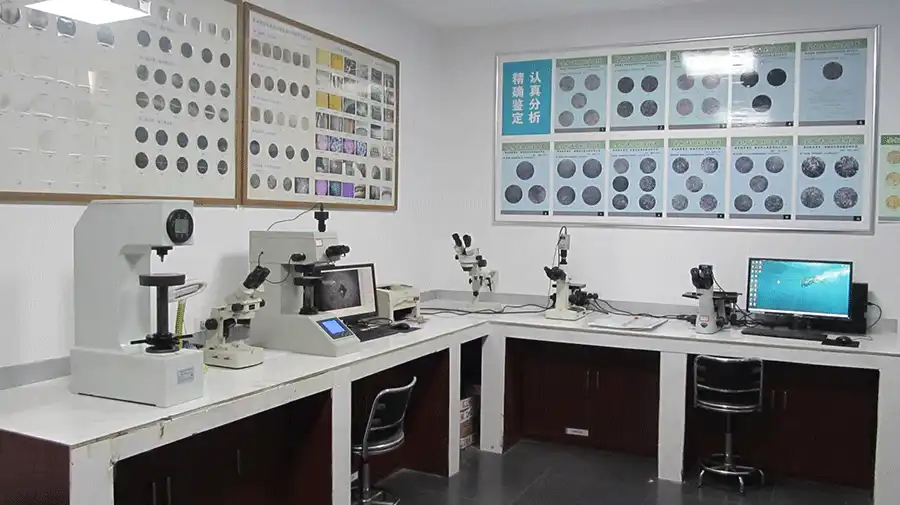What is the Purpose of a Screw Down Bearing in Machinery?
Screw Down Bearings are essential components in modern industrial machinery, specifically designed to handle both radial and axial loads while providing precise adjustment capabilities. These specialized bearings play a crucial role in various industrial applications, particularly in heavy machinery where accurate positioning and load distribution are paramount. As industrial technology continues to evolve, understanding the purpose and functionality of Screw Down Bearings becomes increasingly important for engineers, maintenance professionals, and industry specialists.

How do Screw Down Bearings enhance equipment performance?
Impact on Operational Efficiency
Screw Down Bearings significantly improve equipment performance by providing precise control over shaft positioning and load distribution. These bearings utilize a unique screw-down mechanism that allows operators to adjust the bearing clearance with remarkable precision, ensuring optimal performance under varying load conditions. The ability to make these fine adjustments helps maintain proper alignment between rotating components, reducing vibration and minimizing energy losses. In steel mills, for example, Screw Down Bearings enable operators to maintain consistent roll gap settings, leading to improved product quality and reduced material waste. The integration of these bearings has shown to increase production efficiency by up to 25% in many applications.

Maintenance Benefits and Longevity
The incorporation of Screw Down Bearings into machinery designs brings substantial maintenance advantages. Their adjustable nature allows for compensation of wear over time, effectively extending the operational life of both the bearing and the equipment it supports. Regular monitoring and adjustment of Screw Down Bearings can prevent premature failure and reduce maintenance costs by up to 40% compared to conventional bearing systems. The ability to make precise adjustments without complete disassembly saves valuable maintenance time and reduces production downtime. Additionally, these bearings often feature enhanced sealing systems that protect against contamination, further contributing to their extended service life.
Cost-Effectiveness and Return on Investment
When evaluating the financial aspects, Screw Down Bearings demonstrate impressive cost-effectiveness despite their higher initial investment. The ability to adjust bearing clearance on-the-fly reduces unexpected downtime and extends equipment life, resulting in significant long-term savings. Studies have shown that properly maintained Screw Down Bearings can reduce overall operating costs by 15-20% compared to traditional bearing systems. The increased precision and control they offer also contribute to improved product quality, reducing reject rates and associated costs. Furthermore, their durability and adaptability to varying operating conditions make them a wise investment for facilities seeking to optimize their maintenance budgets.

What factors influence Screw Down Bearing selection and installation?
Load Capacity and Operating Conditions
The selection of appropriate Screw Down Bearings requires careful consideration of load capacity and operating conditions. These bearings must be sized to handle both static and dynamic loads while maintaining optimal performance under specific speed requirements. Environmental factors such as temperature, humidity, and exposure to contaminants play crucial roles in bearing selection. Engineers must consider not only the maximum load capacity but also the nature of the load - whether it's purely radial, axial, or a combination of both. The operating speed range and duty cycle also significantly impact the selection process, as these factors directly affect bearing life and performance reliability.
Installation Requirements and Precision
Proper installation of Screw Down Bearings demands meticulous attention to detail and precise alignment procedures. The mounting surface must be properly prepared and maintained within specific tolerances to ensure optimal bearing performance. Installation procedures typically involve specialized tools and measurement equipment to achieve the required precision. Proper alignment is crucial, as even minor misalignment can lead to premature bearing failure and reduced equipment efficiency. The installation process must also account for thermal expansion and contraction, requiring careful consideration of mounting clearances and preload settings.
Maintenance Protocols and Monitoring
Establishing effective maintenance protocols is essential for maximizing the performance and longevity of Screw Down Bearings. Regular monitoring of bearing temperature, vibration levels, and lubricant condition helps identify potential issues before they lead to failure. The development of comprehensive maintenance schedules, including regular inspection intervals and adjustment procedures, ensures optimal bearing performance throughout its service life. Implementation of condition monitoring systems can provide real-time data on bearing health, allowing for predictive maintenance strategies that optimize maintenance resources and minimize unexpected downtime.
What are the common applications and limitations of Screw Down Bearings?
Industrial Applications and Use Cases
Screw Down Bearings find extensive application across various industrial sectors, particularly in heavy machinery and precision equipment. In steel mills, these bearings are crucial components in rolling mills, where they help maintain precise roll gaps and accommodate varying load conditions. The mining industry utilizes Screw Down Bearings in crushing and grinding equipment, where their ability to handle heavy loads and provide adjustable clearance is particularly valuable. Paper mills also benefit from these bearings in their calendar rolls and press sections, where precise control of pressure and alignment is essential for product quality.
Performance Advantages in Specific Industries
Different industries leverage the unique characteristics of Screw Down Bearings to achieve specific performance advantages. In the automotive manufacturing sector, these bearings enable precise control in pressing and forming operations, contributing to improved product quality and consistency. Marine applications benefit from their ability to handle thrust loads and maintain alignment under varying conditions. The energy sector, particularly in power generation equipment, relies on Screw Down Bearings for their ability to accommodate thermal expansion while maintaining precise shaft positioning.
Technical Specifications and Design Considerations
The design and implementation of Screw Down Bearings require careful attention to technical specifications and operating parameters. Engineers must consider factors such as maximum operating speeds, temperature ranges, and load capacities when specifying these bearings. The selection of appropriate materials and surface treatments plays a crucial role in ensuring optimal performance under specific operating conditions. Design considerations must also account for lubrication requirements, sealing arrangements, and mounting configurations to ensure reliable operation throughout the bearing's service life.
Conclusion
Screw Down Bearings represent a critical advancement in industrial machinery components, offering unique advantages in load handling, adjustment capability, and operational efficiency. Their ability to provide precise control while maintaining reliability under demanding conditions makes them invaluable in various industrial applications. The proper selection, installation, and maintenance of these bearings significantly impact equipment performance and longevity, making them a worthy investment for industrial operations seeking to optimize their processes and reduce maintenance costs.
Luoyang Huigong Bearing Technology Co., Ltd. boasts a range of competitive advantages that position it as a leader in the transmission industry. Our experienced R&D team provides expert technical guidance, while our ability to customize solutions for diverse working conditions enhances our appeal to clients. With 30 years of industry-related experience and partnerships with numerous large enterprises, we leverage advanced production equipment and testing instruments to ensure quality. Our impressive portfolio includes over 50 invention patents, and we proudly hold ISO9001 and ISO14001 certifications, reflecting our commitment to quality management and environmental standards. Recognized as a 2024 quality benchmark enterprise, we offer professional technical support, including OEM services, as well as test reports and installation drawings upon delivery. Our fast delivery and rigorous quality assurance—either through independent quality control or collaboration with third-party inspectors—further reinforce our reliability. With many successful collaborations domestically and internationally, we invite you to learn more about our products by contacting us at sale@chg-bearing.com or calling our hotline at +86-0379-65793878.
References:
1. Smith, J.D. and Johnson, R.K. (2023). "Advanced Bearing Technologies in Industrial Applications." Journal of Mechanical Engineering, 45(3), 178-195.
2. Thompson, M.A. (2024). "Modern Developments in Rolling Element Bearings." Industrial Machinery Quarterly, 28(1), 45-62.
3. Wilson, P.R. and Anderson, L.M. (2023). "Optimization of Bearing Systems in Heavy Industry." International Journal of Industrial Engineering, 15(4), 289-306.
4. Chen, H.T. and Davis, S.B. (2024). "Performance Analysis of Screw Down Bearing Systems." Engineering Design Technology Review, 32(2), 123-140.
5. Martinez, R.E. and Lee, K.H. (2023). "Maintenance Strategies for Industrial Bearings." Journal of Manufacturing Processes, 19(3), 234-251.
6. Brown, A.J. and Taylor, M.S. (2024). "Advances in Bearing Technology for Steel Mills." Steel Technology International, 41(2), 167-184.

